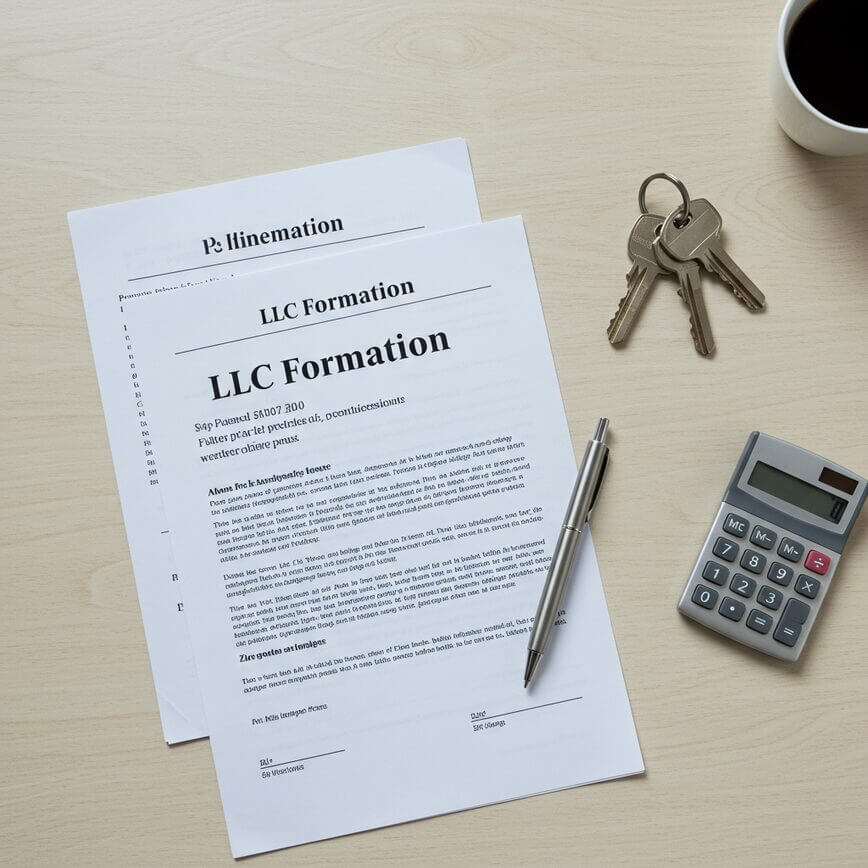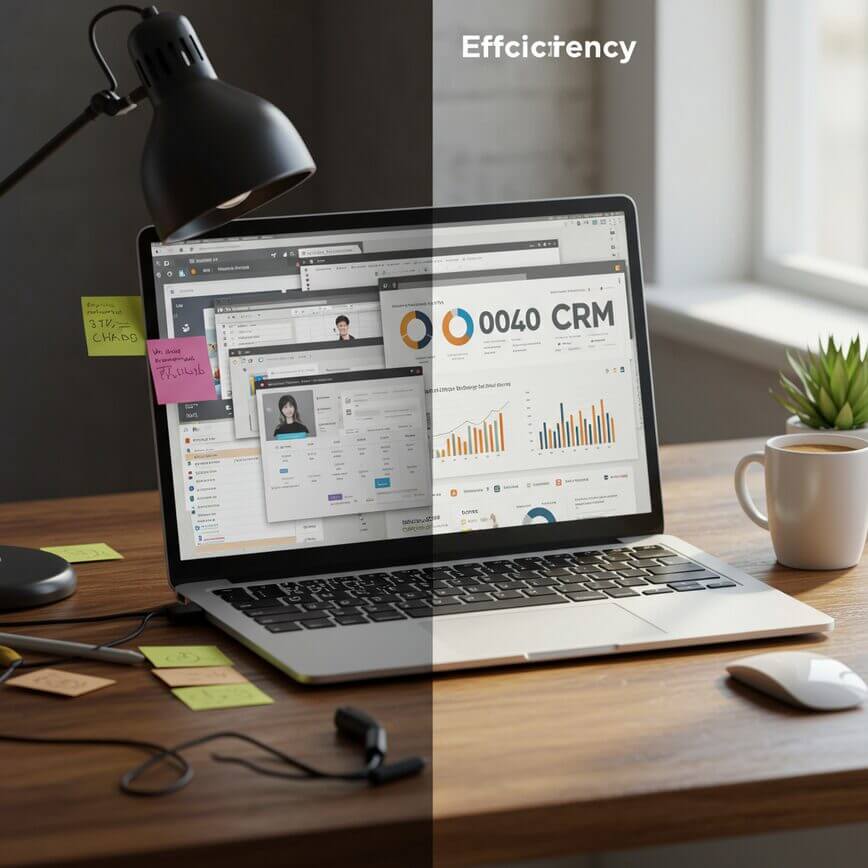Disclaimer: The information provided in this article is for informational purposes only and does not constitute legal, financial, or tax advice. Tax laws are complex and subject to change. You must consult with a qualified professional, such as a CPA or tax attorney, to address your specific circumstances. The author and publisher are not liable for any actions taken in reliance on this information.
Starting a new business is a thrilling venture, but it comes with a critical question that can define your path to success: “Where can I afford to launch and grow?” For many entrepreneurs in Southern California, the Inland Empire emerges as a promising option. But the big question remains: is the Inland Empire expensive for a small business?
Table of Contents
- The Short Answer: Is the Inland Empire Expensive?
- Breaking Down the Core Business Startup Costs in the Inland Empire
- The “Hidden” Costs That Make Any Location Expensive
- How to Make Your Inland Empire Business More Affordable and Profitable
- Your Next Step: Get a Detailed Financial Breakdown
- Conclusion: The Inland Empire Can Be Your Launchpad for Success
The answer is nuanced. Compared to the sky-high costs of Los Angeles or Orange County, the Inland Empire offers significant financial advantages in areas like commercial rent and labor. However, success isn’t just about lower rent. True affordability comes from smart planning and operational efficiency. Without the right systems in place, many entrepreneurs find that up to 30% of their workweek is consumed by manual administrative tasks—a hidden cost that makes any location expensive. This is time spent manually sending emails, tracking leads in a spreadsheet, and creating invoices instead of serving customers and growing the business.
This comprehensive guide will provide a clear 2025 cost analysis for starting an Inland Empire business. We’ll break down the essential government fees and operational expenses and, more importantly, reveal the hidden costs that can drain your budget and how to eliminate them from day one. By understanding both the visible and invisible expenses, you can make an informed decision and build a truly profitable venture.
The Short Answer: Is the Inland Empire Expensive?
Compared to its coastal neighbors, the Inland Empire is generally more affordable for a small business. This isn’t just a guess; it’s based on tangible economic factors. Key advantages include significantly lower commercial real estate costs, a large and diverse labor pool that is more accessible than in hyper-competitive coastal markets, and a supportive, pro-business environment in cities across Riverside and San Bernardino counties. This environment often translates into faster permit processing and local governments that are eager to attract and retain new businesses.
However, “affordable” doesn’t mean “free.” You still need to budget carefully for a range of business startup costs that are universal, regardless of location. Your specific expenses will vary based on your industry (a restaurant will have far higher startup costs than a freelance consultant), your business structure (an LLC costs more to set up than a sole proprietorship), and your growth plans. The real challenge isn’t just paying the initial fees; it’s building a business that operates efficiently to maximize the region’s cost advantages and prevent hidden inefficiencies from eroding your profits.
Breaking Down the Core Business Startup Costs in the Inland Empire

When calculating how much it costs to start a business in the Inland Empire, your expenses will fall into two main categories: one-time government and legal fees required to become a legitimate entity, and the ongoing operational expenses needed to serve customers and grow.
One-Time Government and Legal Fees
These are the mandatory, non-negotiable costs required to get your business legally established and compliant with state and local regulations.
- Business Structure Registration: The fee depends on how you structure your company. A Sole Proprietorship is the simplest and cheapest, as you are the business. However, an LLC (Limited Liability Company) or Corporation offers crucial liability protection, separating your personal assets from your business debts. These structures cost more to file with the California Secretary of State (typically $70+), but that initial investment can save you from financial ruin down the line.
- City & County Business Licenses: Nearly every city in the Inland Empire, from Temecula to Rancho Cucamonga, requires a business license or tax certificate to operate legally within its limits. Fees vary significantly. Expect to pay anywhere from $50 to a few hundred dollars, often based on your projected annual revenue or number of employees. This is a recurring annual cost.
- Fictitious Business Name (DBA): If you plan to operate under a name different from your own legal name (for a sole proprietorship) or the registered LLC/Corp name, you’ll need to file a DBA statement with the county clerk in either Riverside or San Bernardino. This usually costs between $40 and $60, plus a separate publication fee to have your DBA printed in a local newspaper, which serves as a public notice.
- Permits and Certifications: This category is highly industry-specific and can be a major cost factor. Depending on your industry (e.g., food service requires health department permits, cosmetology needs a state board license, construction requires a contractor’s license), you may need special permits from county health departments or state boards. Researching these requirements for your specific field is a critical step in your budget planning.
Essential Operational Expenses to Budget For
These are the costs of actually running your business day-to-day. Careful planning here is what separates thriving businesses from those that struggle.
- Commercial Space: This is where the Inland Empire’s affordability shines brightest. Whether you need a retail storefront in a bustling downtown, an industrial warehouse with access to major freeways, or a small office, commercial lease rates are significantly lower than in LA or Orange County. Even so, you must budget for the deposit, first month’s rent, and potential utility setup fees.
- Professional Services: This is not a corner to cut. Budget for consulting with a lawyer and an accountant to ensure your business is set up correctly from the start. A lawyer can review your lease and contracts, while an accountant can help you set up your bookkeeping system properly, saving you immense headaches and potential penalties during tax season.
- Equipment and Supplies: This includes everything from the digital to the physical. For an office-based business, this means computers, software subscriptions, and desks. For a service business, it could be specialized tools, vehicles, and safety gear. Create a detailed list and price everything out.
- Marketing and Branding: You can’t make money if no one knows you exist. Your initial marketing budget should cover a professional website that builds trust, a memorable logo design, and initial advertising campaigns to attract your first customers. For an Inland Empire business, this could include local SEO, targeted social media ads, or joining a local chamber of commerce.
- Insurance: This is a non-negotiable cost of protecting your investment. General liability insurance covers accidents like a customer slipping and falling. Professional liability (or Errors & Omissions) covers you if your advice or service causes a client a financial loss. If you have even one employee, workers’ compensation is required by California law.
The “Hidden” Costs That Make Any Location Expensive

Securing an affordable lease in Riverside or a business-friendly permit in San Bernardino is only half the battle. The most dangerous expenses are the ones you don’t see on an invoice—the costs of inefficiency and disorganization. These silent budget killers can negate all the financial benefits of choosing the Inland Empire.
The High Price of Wasted Time
Studies show that small business owners can lose nearly a third of their workweek to manual administrative tasks. Think about it: every hour spent manually typing follow-up emails, digging through your inbox to find a client’s phone number, creating invoices from a template, or trying to schedule appointments back-and-forth is an hour you’re not spending on revenue-generating activities like marketing, sales, or improving your service. This lost time is a massive hidden cost that directly limits your earning potential.
The Cost of Juggling Multiple Software Systems
To solve these problems, many entrepreneurs patch together a chaotic system of different apps, creating a digital Frankenstein’s monster. This often includes:
- One app for email communication (like Gmail)
- A spreadsheet for tracking leads and customers (like Excel or Google Sheets)
- A separate calendar for appointments (like Google Calendar)
- Another tool for sending invoices and collecting payments (like PayPal or Square)
This “software chaos” isn’t just confusing; it’s expensive and inefficient. You pay multiple subscription fees, and because the systems don’t communicate, you waste precious time trying to connect the dots. You manually copy and paste information from one system to another, creating opportunities for costly human error. This is where our single dashboard for leads, appointments, and messages ends the chaos and keeps you organized.
The Cost of Missed Leads and Poor Follow-Up
When a new lead comes in from your website, what happens? If your process involves a sticky note on your monitor or a new row in a messy spreadsheet, you’re guaranteed to miss opportunities. A potential client who has to wait 24 hours for a response is likely to contact your competitor in the meantime. A single lost client due to a forgotten follow-up can cost you thousands in lifetime value. Without a reliable, automated system for lead capture and follow-up, you’re leaving a significant amount of money on the table.
How to Make Your Inland Empire Business More Affordable and Profitable
The secret to leveraging the Inland Empire’s affordability is to build a lean, efficient operation from the very beginning. You must attack the hidden costs of inefficiency with the same vigor you use to negotiate your lease. This is where a smart, all-in-one platform becomes your most valuable asset.
Centralize Your Operations with a Single Dashboard
Instead of fighting with five different apps, imagine managing every lead, appointment, and client message from one clean, organized dashboard. An integrated system doesn’t just save you money on multiple subscriptions; it saves you invaluable time and mental energy. When a client calls, you can see their entire history in one place, which helps you look more professional, reliable, and organized to every client. This level of preparedness builds trust and encourages repeat business.
Automate Your Administrative Tasks
The best way to reclaim that 30% of your workweek is through smart automation. A powerful CRM like I Love My CRM can automate follow-ups and bookings. For example, when a lead fills out a form on your website, the system can instantly send them a text message and an email, then notify you to follow up. It can send automatic appointment reminders to reduce no-shows, ensuring your calendar fills up without you lifting a finger. This frees you up to focus on the business-building activities that actually drive growth and require a human touch.
Choose a Partner with Transparent Pricing and Real Support
When choosing your core business software, look for a partner, not just a product. You need a tool that grows with you. Insist on one affordable price with no hidden fees or confusing add-on costs. A risk-free trial is essential so you can verify the value and see how it fits your workflow before you ever pay a dime.
Furthermore, your success is their goal. When you need help, who will you talk to? Ensure you can easily find contact information for a real, human support team. At I Love My CRM, our support team is comprised of industry experts with verifiable experience in small business operations, not just call center agents reading from a script. We understand the challenges you face because we’ve been there, and we’re here to help you succeed.
Your Next Step: Get a Detailed Financial Breakdown
This guide has outlined the major cost categories you’ll face when starting your Inland Empire business. But to create a truly accurate budget, you need to move from categories to concrete numbers. For a line-by-line look at government fees and common operational costs, you need a more granular view to build a realistic financial forecast.
To help you plan effectively, we’ve created a complete guide with specific figures and links to official resources. See our detailed breakdown of the real cost to start a business in the Inland Empire to get the concrete financial overview you need to move forward with confidence.
Conclusion: The Inland Empire Can Be Your Launchpad for Success
So, is the Inland Empire expensive for a small business? The region itself offers a cost-effective foundation for your entrepreneurial dreams, providing a clear advantage over more saturated coastal markets. But true, long-term affordability is determined by your operational efficiency, not just your address.
By eliminating wasted time, centralizing your systems, and automating administrative work from the outset, you can amplify the financial advantages of the IE and build a more profitable, less stressful business. Don’t let system chaos and manual tasks make your new venture more expensive than it needs to be. Start smart, stay organized, and set your Inland Empire business up for success from day one. The opportunity is here; a streamlined operation is how you seize it.




